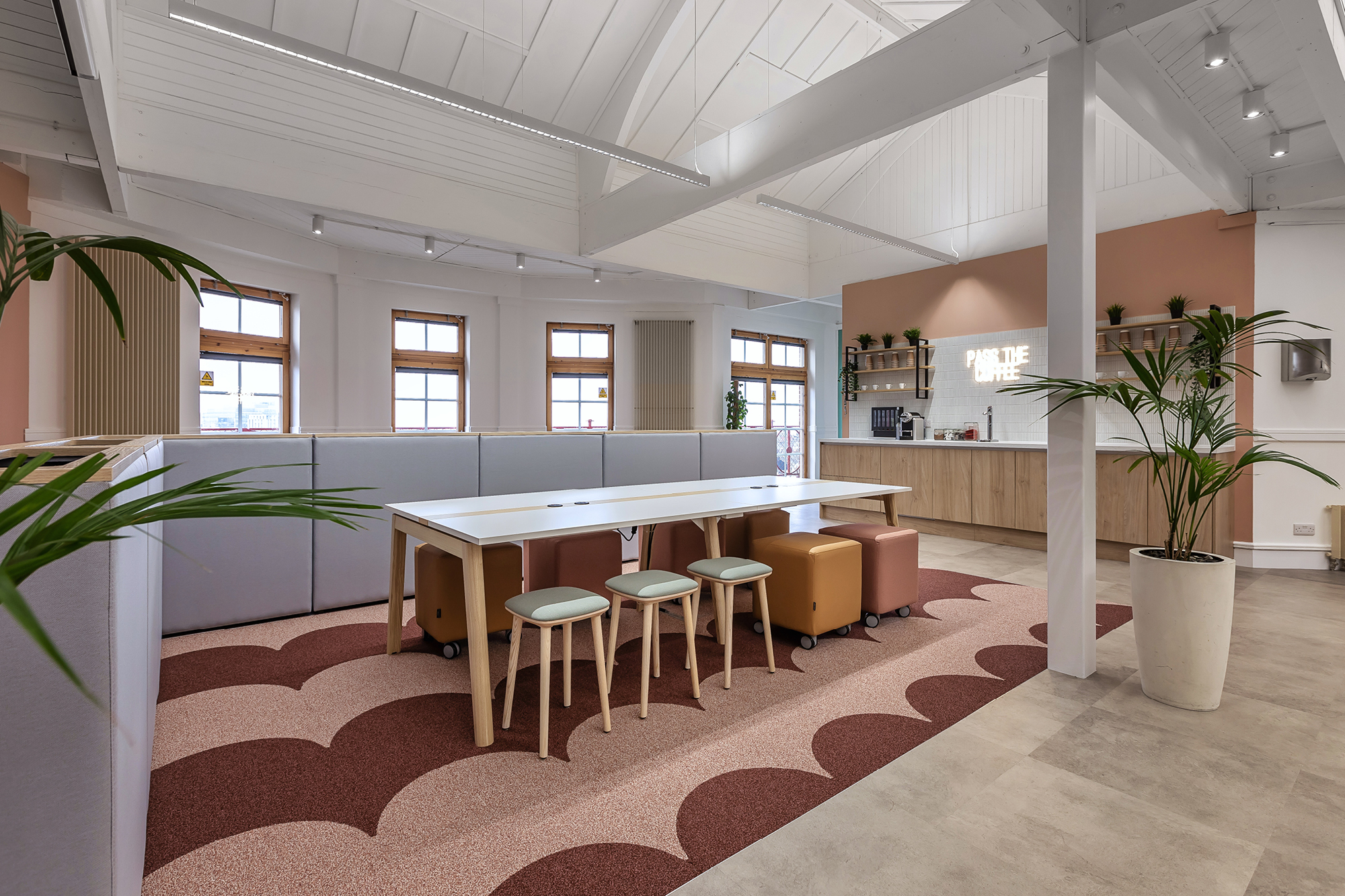Planning and Designing an Office Space
This article aims to give a quick overview of the office design and planning process. It also gives some tips and tricks that may be helpful if you are about to start this journey.
STEP 1 - HAVE CLEAR GOALS
Before starting your project, stop and ask yourself what are the specific outcomes that the office design needs to produce that will make it successful?
Also identify the company goals and plans for the next 3 to 5 years. Will they affect the office redesign?
This stage of a project is part of the Workplace Consultancy stage.
STEP 2 - GET A BLANK FLOORPLAN TO SCALE
Once you have your goals set you will need a good plan of the area created to scale. If you don't have one then you will need to measure the area carefully and draw a scaled plan.
Make sure you have identified all doors, windows, power and data points, radiators, and anything else that needs to be accessed like light switches, air-conditioning or thermostat controls, fire alarm call points, fire extinguishers etc.
STEP 3 - CLEARLY IDENTIFY YOUR REQUIREMENTS
Note the size and make-up of the different teams that need to be accommodated in the office space you are designing. Identify 'who works with who' or 'who needs to communicate regularly with who'.
What are the requirements for workstations? How much space does each person actually need? What is the ideal shape for the tasks they perform? How much personal storage space do they need?
Next identify the other shared facilities that are needed e.g. central storage, meeting facilities, printers and copiers etc.
If you are trying to work out what size office you will need for your staff numbers then you could download our free Office Space Calculator.
STEP 4 - START SPACE PLANNING THE OFFICE SPACE
Start with sketching out the main walkways that will need to be kept clear. For smaller offices make sure you maintain at least 750mm clear walkways including any pinch points. If there is any possibility of wheelchair users using the area they you need to provide a minimum of 900mm width. However we would recommend working to 1000mm or 1200mm if possible. You also need to bear in mind fire escape routes.
Next roughly sketch where different departments or people should ideally be positioned to facilitate good communication. Also consider the positioning of shared facilities to avoid needless time wasting.
Please note that you should also undertake a fire risk assessment for any office. This can be downloaded directly from the Government website - GOV.UK FIRE RISK ASSESSMENT FOR OFFICES
STEP 5 - SPACE PLANNING THE FURNITURE
If you are planning banks of workstations with persons sitting back to back then the recommended gap between desks is a minimum of 2000mm and if possible, as much as 2200 or 2400mm. This may vary depending on the size of chairs being used, the nature of the work being performed and also the number of workstations in each bank. Remember to consider access to power and data when positioning workstations and office machines.
Don't forget to allow for informal meeting space within the main office if you can and also give full consideration to adopting elements of agile working. Most companies are now considering adopting an agile working or hybrid working model. This would create a much more flexible and multi-purpose office space to allow for a combination of home working and office based working.
STEP 6 - WHAT LOOK AND FEEL DO YOU WANT?
Another key question that needs to be thought about is what look and feel do you want for your new office? This will often depend on your company culture or how you want your company culture to evolve. Some companies are very keen to use their corporate colour through the office. This needs to be done with care as the effect may not be the one you are trying to achieve. There has been a marked trend in recent years towards a more residential, softer feel to the office. This has lead to the adoption of softer pastel colours and wood finishes, rather than bold primary colours.
WHAT NEXT?
Maybe you feel it would be better to use a professional office design company to help you through the office design maze?
Alternatively you may have been successful in producing an office design that ticks all your boxes and you just need someone to make it all happen!
Either way we can help - just give us a call on 023 9248 9933 or fill in the contact form to request a free initial consultation.

